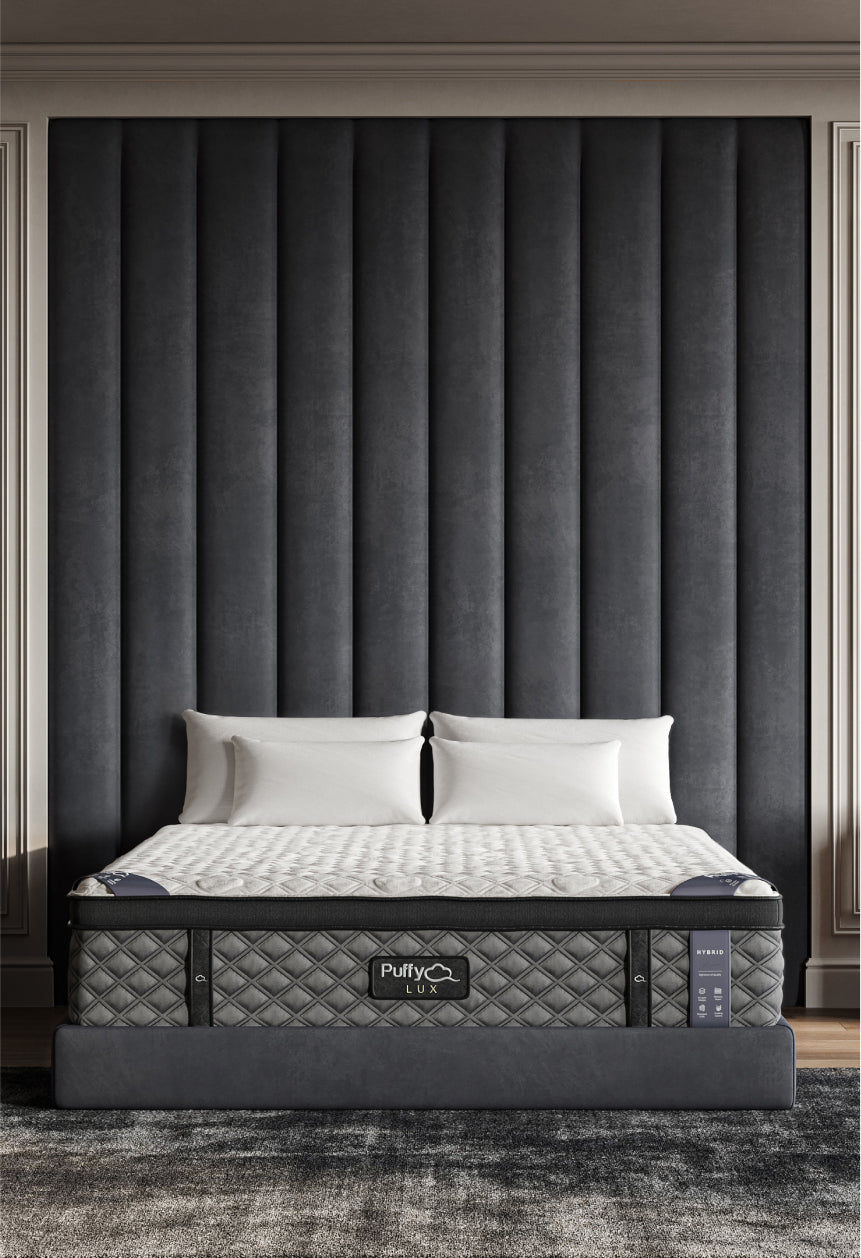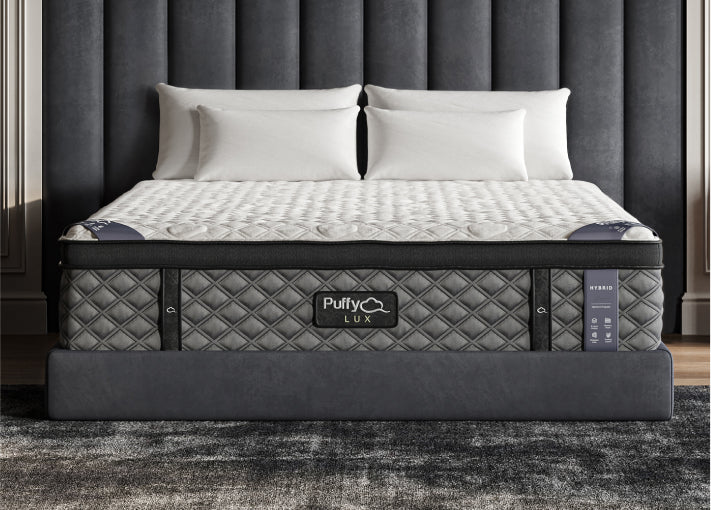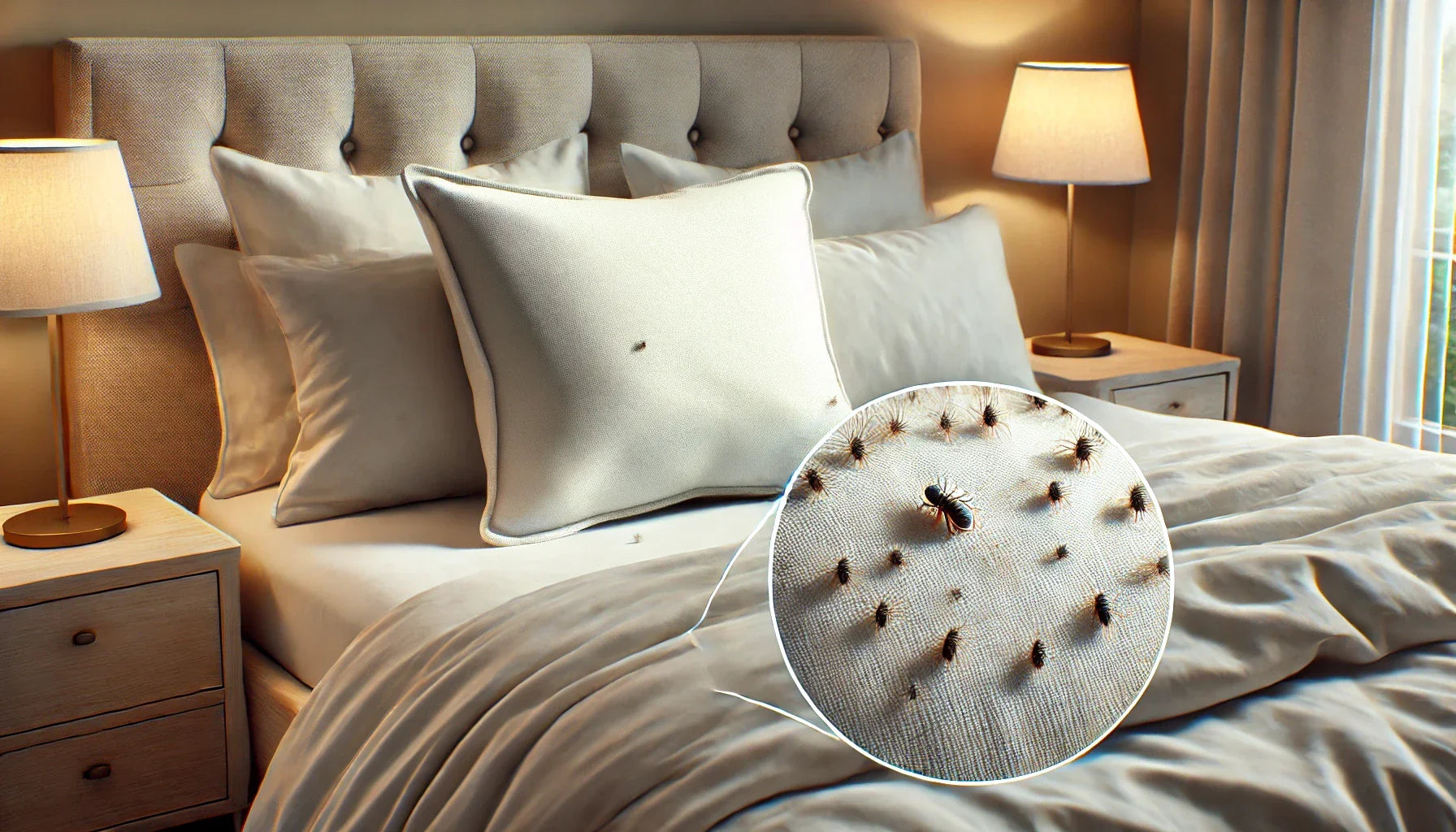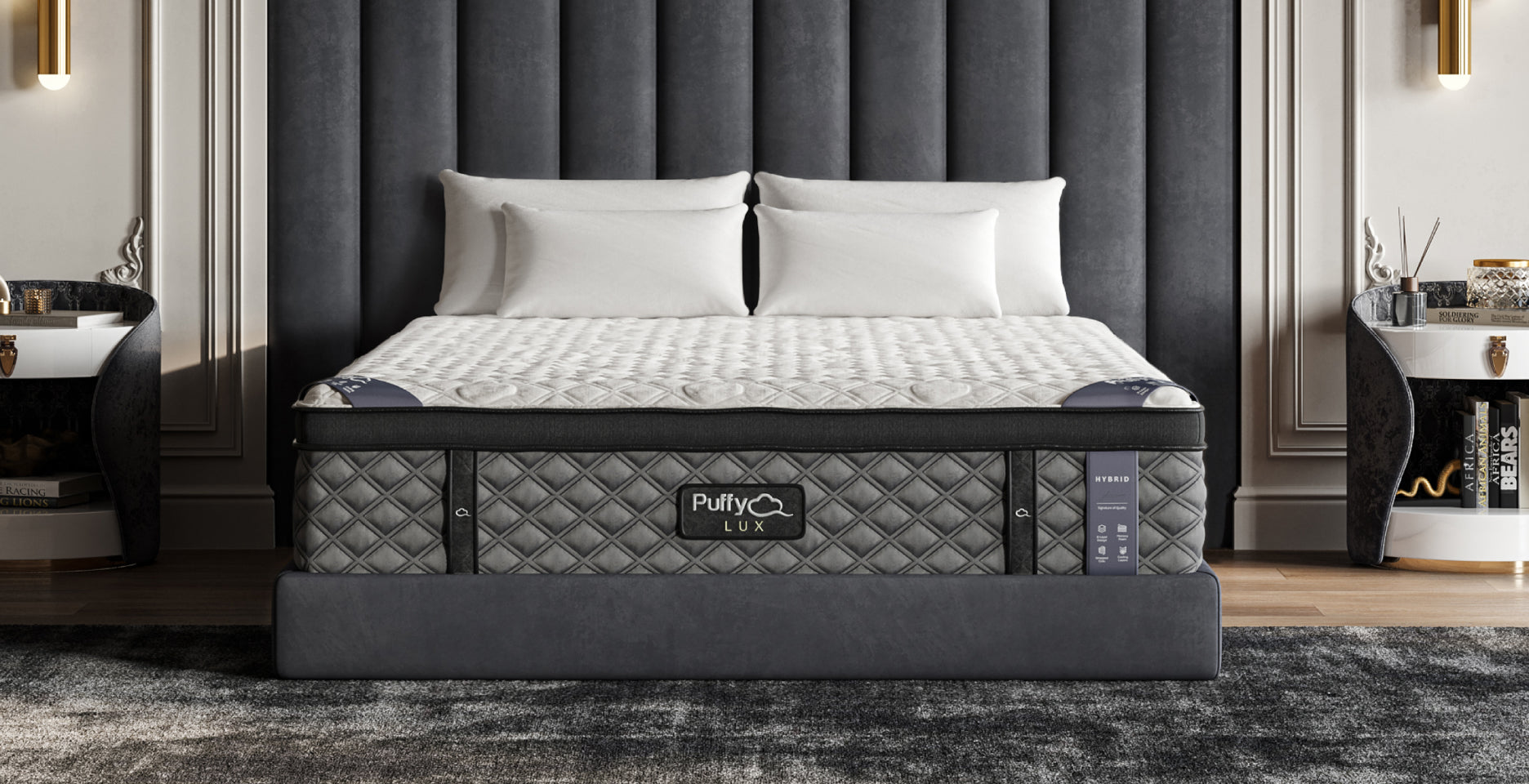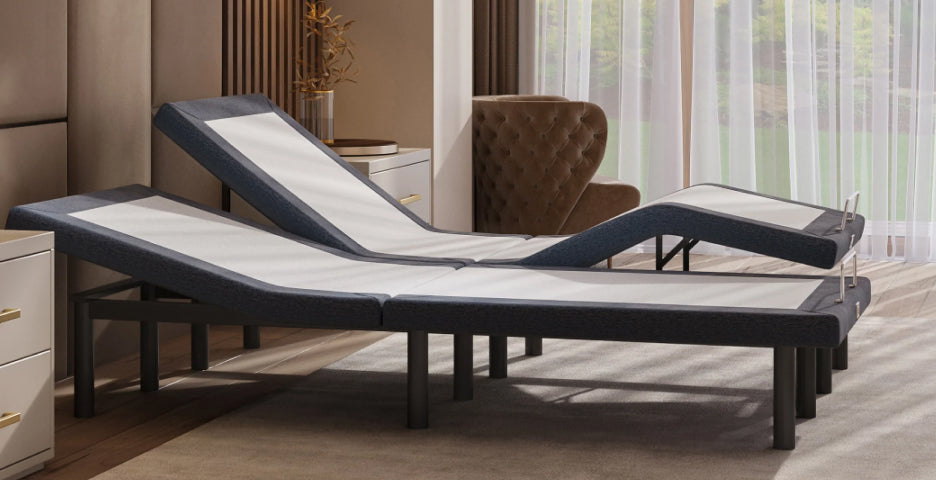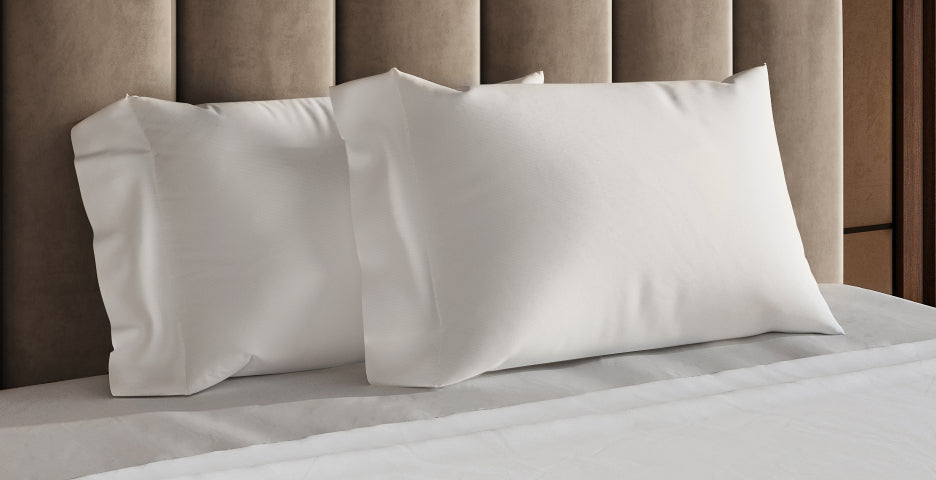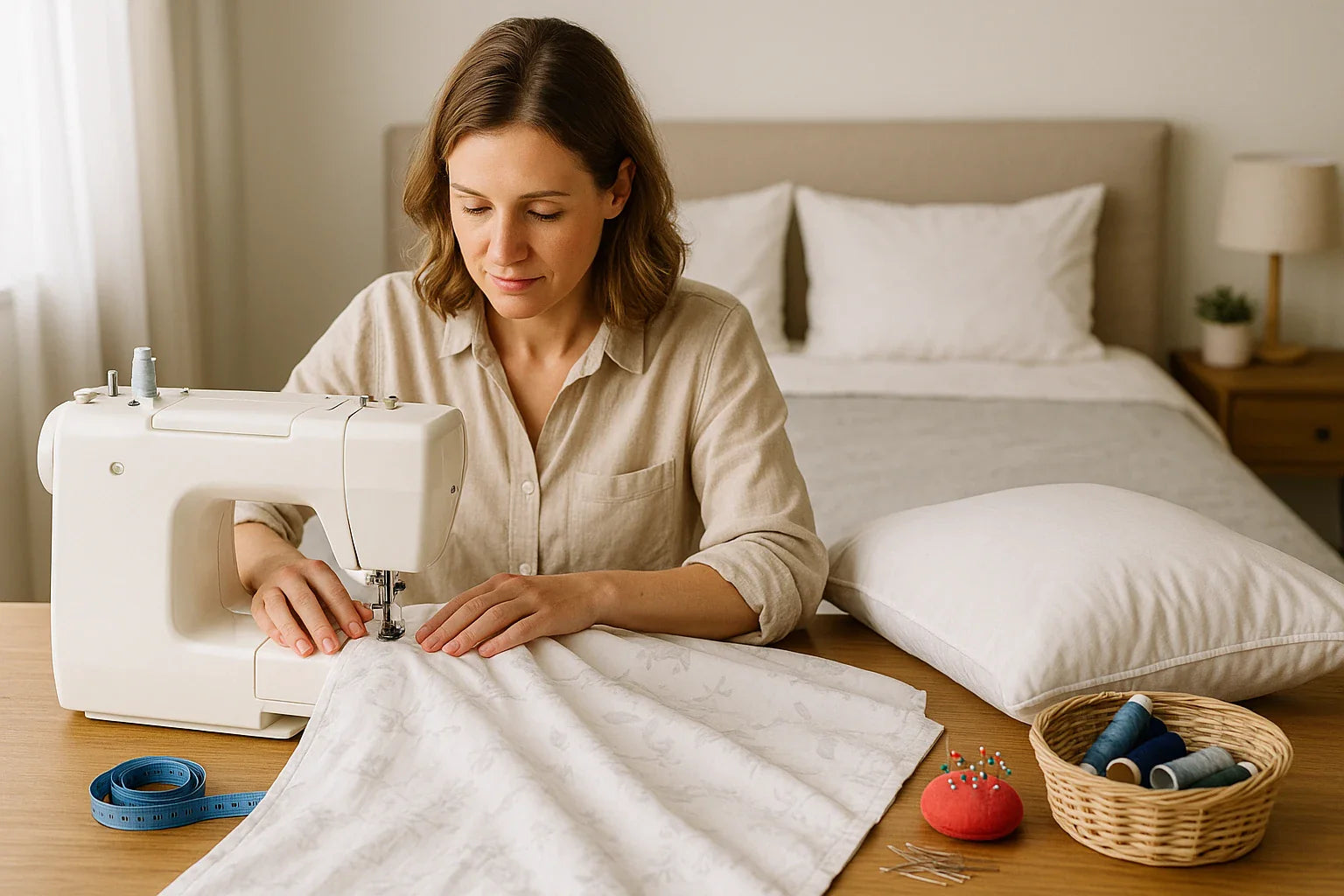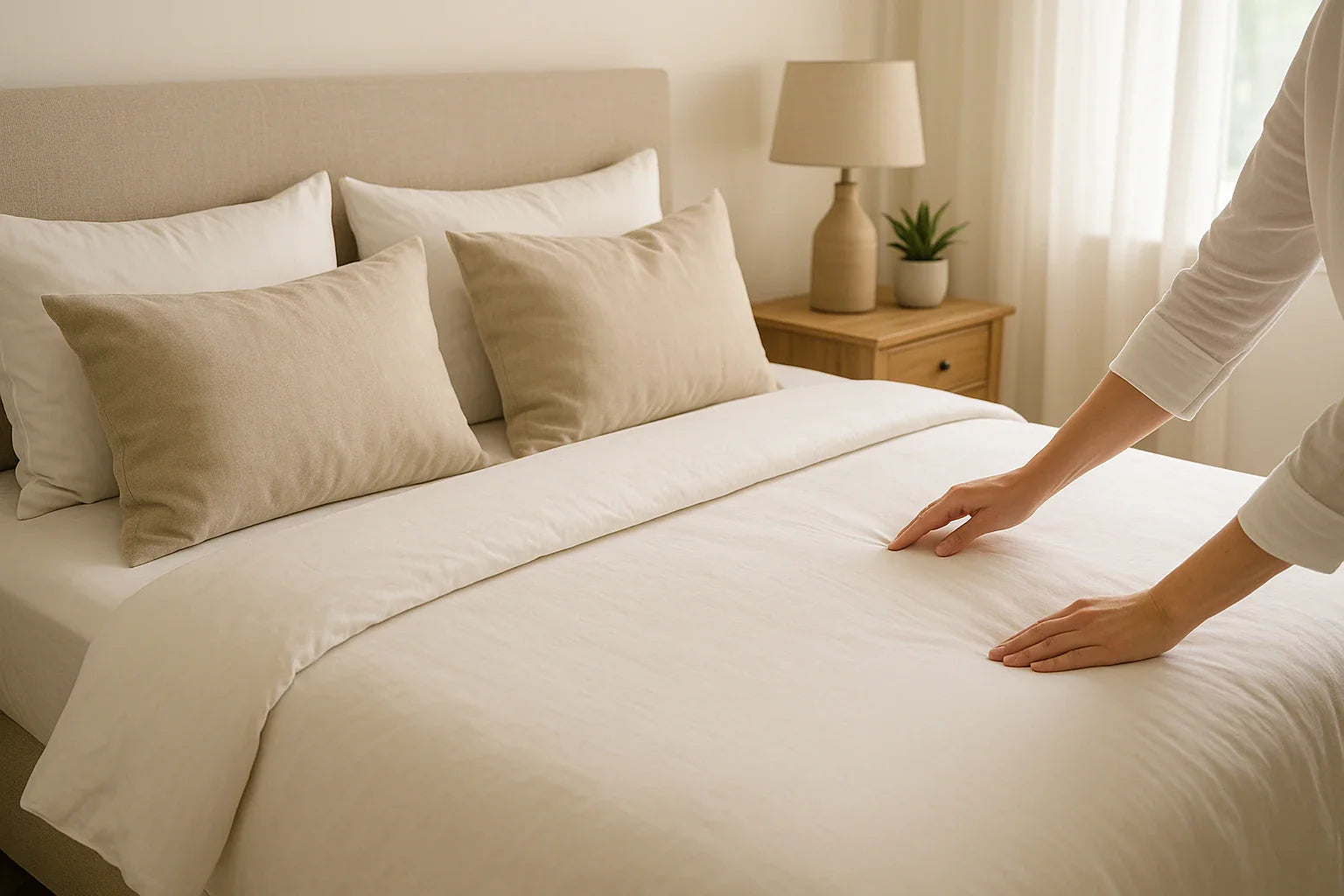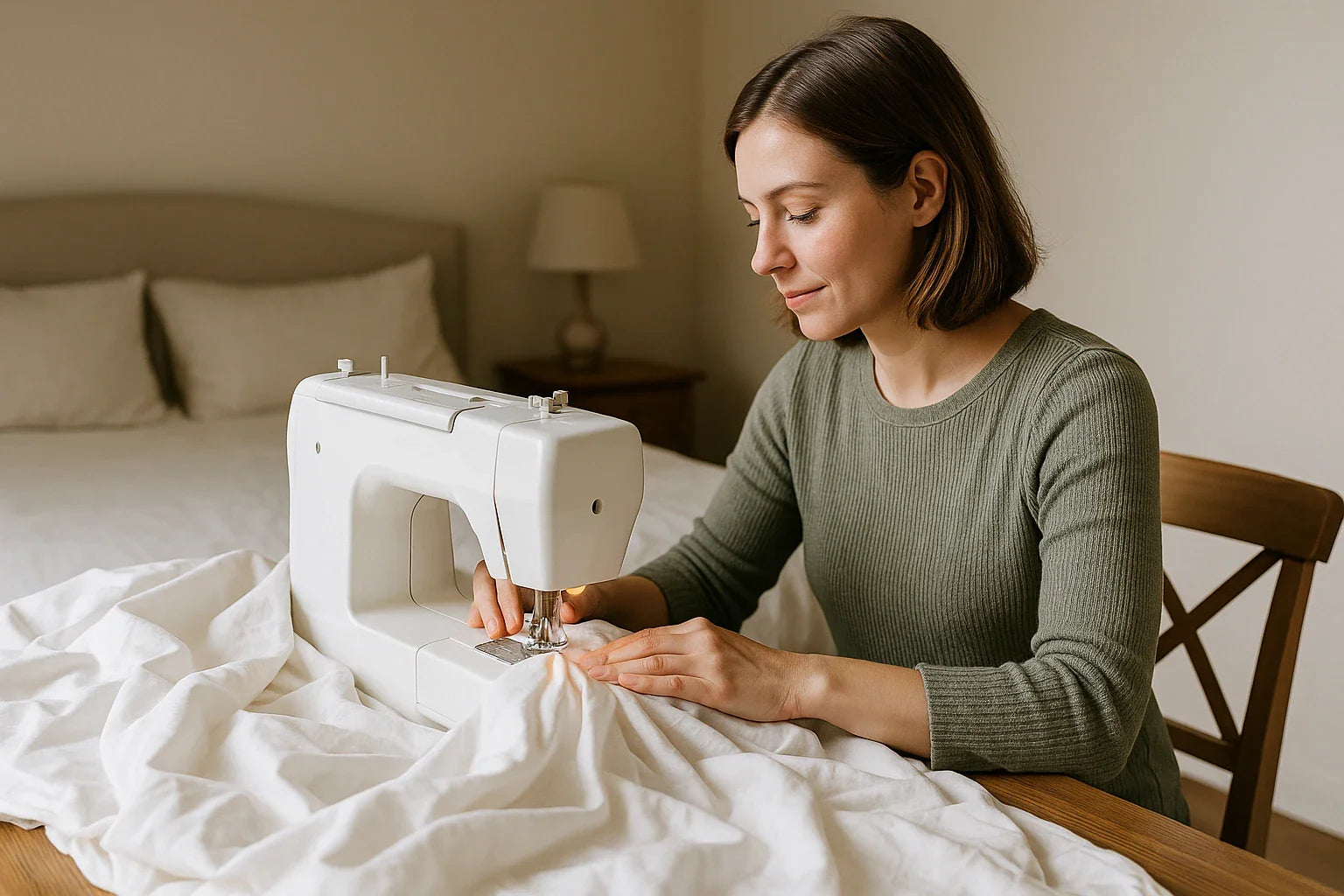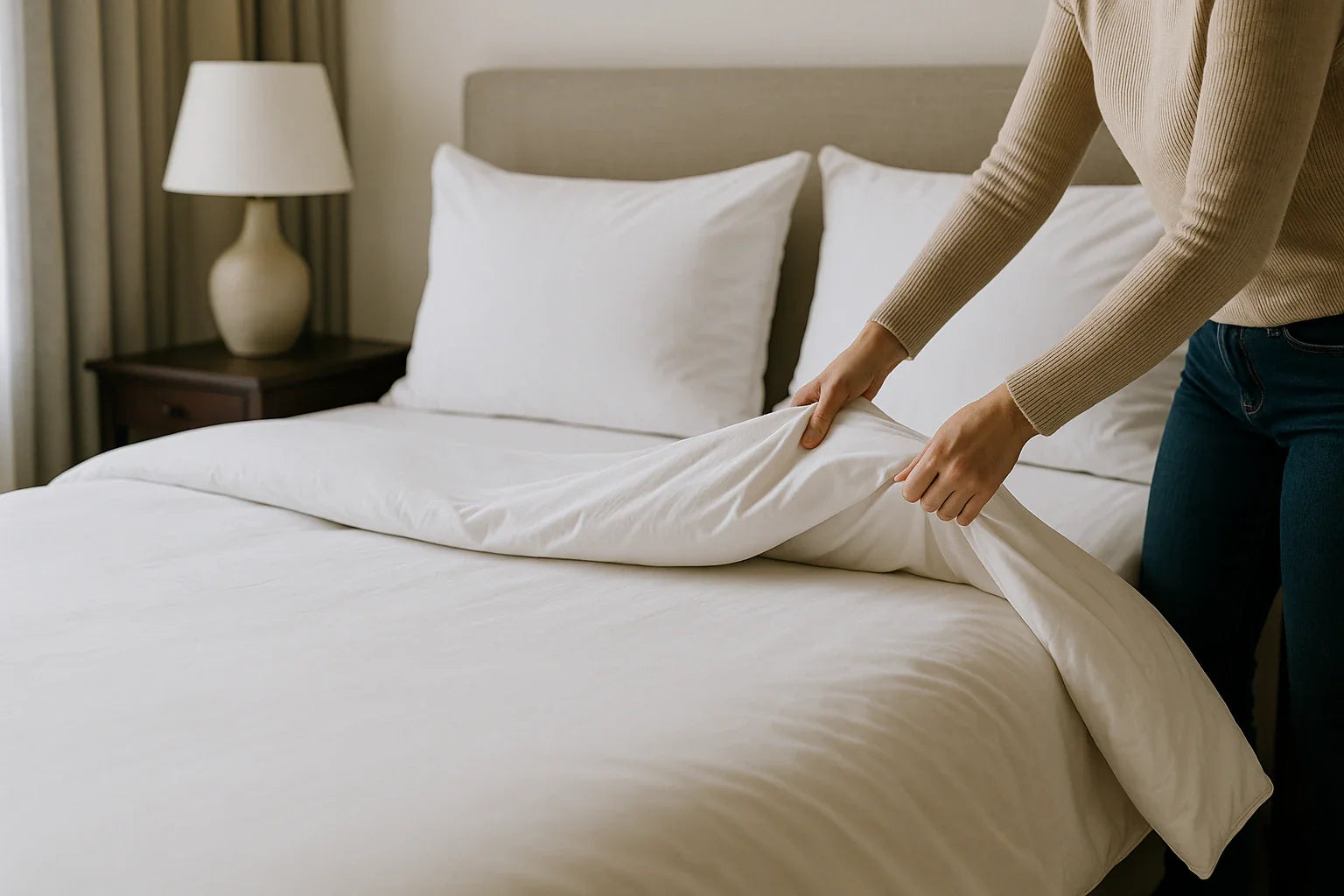Key Takeaways
- Lice can survive on pillows for a short time, but they mainly spread through direct contact.
- Signs of lice on pillows include small white nits, dark specks, and itching.
- Washing bedding at high temperatures is crucial to eliminating lice.
- Preventing lice infestation involves maintaining good hygiene and avoiding head-to-head contact.
- Pairing proper hygiene with a high-quality, hypoallergenic mattress can help keep your sleep environment clean and comfortable.
Lice infestations are a common concern, especially for households with children.
While lice primarily spread through direct contact, their presence on pillows can be worrying.
If you suspect lice in your home, knowing how to identify, clean, and prevent their spread is essential.
In this guide, we’ll explore how lice affect pillows and what you can do to protect your bedding.
Can You See Lice on Your Pillow?
Lice are tiny, but they are not invisible. They can occasionally be found on pillows, especially if someone with lice has recently used the bedding. Here’s what to look for:
Signs of Lice on a Pillow:
-
Tiny white nits (lice eggs) that stick to pillow fibers and are difficult to remove.
-
Dark specks or tiny bugs moving along the fabric, often near the edges.
-
Itchy residue or small blood spots left behind from bites, sometimes accompanied by a musty odor.
-
Fine dust-like particles, which may be the remains of lice excrement or shed exoskeletons.
Switching to a hypoallergenic mattress like the Puffy Lux Mattress can help create a cleaner, healthier sleep environment, minimizing the risk of pests and allergens.
What Does Lice Look Like on a Pillow?
Lice are small, wingless parasites that feed on human blood. While they prefer to stay close to the scalp, they may fall onto pillows and bedding.
Identifying Lice on a Pillow:
-
Adult lice are about the size of a sesame seed and appear brownish or gray.
-
Nits (lice eggs) are tiny white or yellow dots attached to hair fibers but can sometimes end up on pillows.
-
Excrement or blood spots may be present from lice feeding.
-
Shed exoskeletons from maturing lice can sometimes be visible on pillowcases and sheets.
Can You Get Lice from a Pillow?
Lice cannot survive for long away from a human host. However, they can linger on a pillow for a short period, increasing the risk of transmission.
How Lice Spread:
-
Direct head-to-head contact is the most common method of lice transmission.
-
Sharing bedding or pillows with an infested person can occasionally spread lice.
-
Using contaminated personal items like hairbrushes or hats increases the risk.
-
Close proximity in crowded spaces such as schools, daycares, or sleepovers can contribute to the spread of lice.
How Long Can Lice Live on a Pillow?
Lice need human blood to survive. When separated from a host, they usually die within 24-48 hours.
Lifespan of Lice on Different Surfaces:
-
Pillows and bedding: Up to 48 hours.
-
Clothing and hats: Up to 48 hours.
-
Combs and hairbrushes: Lice can survive longer if trapped in hair strands.
-
Furniture and carpets: Lice may remain for a short time but cannot thrive without a human host.
How to Get Rid of Lice on Pillows
If someone in your household has lice, it’s important to take immediate action to clean bedding and pillows.
Steps to Eliminate Lice from Pillows:
-
Wash pillowcases and sheets in hot water (at least 130°F) to kill lice and nits.
-
Dry on high heat for at least 30 minutes to ensure all lice are eliminated.
-
Vacuum pillows and bedding to remove any lingering lice or debris.
-
Use a pillow encasement to prevent lice from settling into the pillow fabric.
-
If necessary, replace pillows to ensure a completely clean sleeping environment.
-
Disinfect surrounding areas such as mattresses, headboards, and carpets to prevent reinfestation.
-
Avoid using chemical sprays on pillows, as they may contain harmful ingredients and are often ineffective against lice.
Investing in a high-quality, breathable mattress like the Puffy Royal Mattress can contribute to a cleaner and more hygienic sleep surface, reducing the chances of unwanted allergens and pests.
Best Practices for Preventing Lice Infestation
Preventing lice from spreading to pillows and bedding involves maintaining good hygiene and avoiding direct contact.
Tips for Lice Prevention:
-
Avoid sharing personal items like hairbrushes, hats, and bedding.
-
Regularly wash and dry bedding at high temperatures.
-
Check for lice regularly if someone in the household has been exposed.
-
Use essential oils like tea tree oil, which may help repel lice.
-
Encourage children to keep their heads apart when playing or at school.
-
Maintain a clean sleep environment by washing stuffed animals, blankets, and frequently used fabrics.
-
Teach proper hygiene habits to children, including avoiding direct head contact with others.
Conclusion
While lice prefer to stay on the scalp, they can sometimes end up on pillows and bedding.
Although they do not survive long on fabric, proper hygiene and cleaning practices can effectively eliminate them.
Washing and drying pillows at high temperatures, avoiding head-to-head contact, and maintaining a clean sleeping environment are key to preventing lice infestations.
By following these tips, you can ensure a healthier and more comfortable sleep experience.

$1,350 in savings
Transform your comfort with the Puffy Lux.
Relax into award-winning comfort with this hybrid mattress:
- 8 layers of cloudlike luxury.
- Medium-plush feel.
- Gel-infused cooling.
- 101-night sleep trial.
